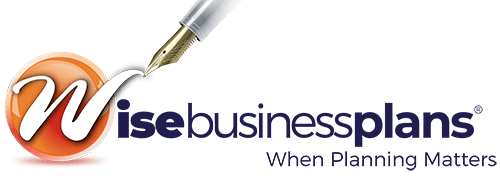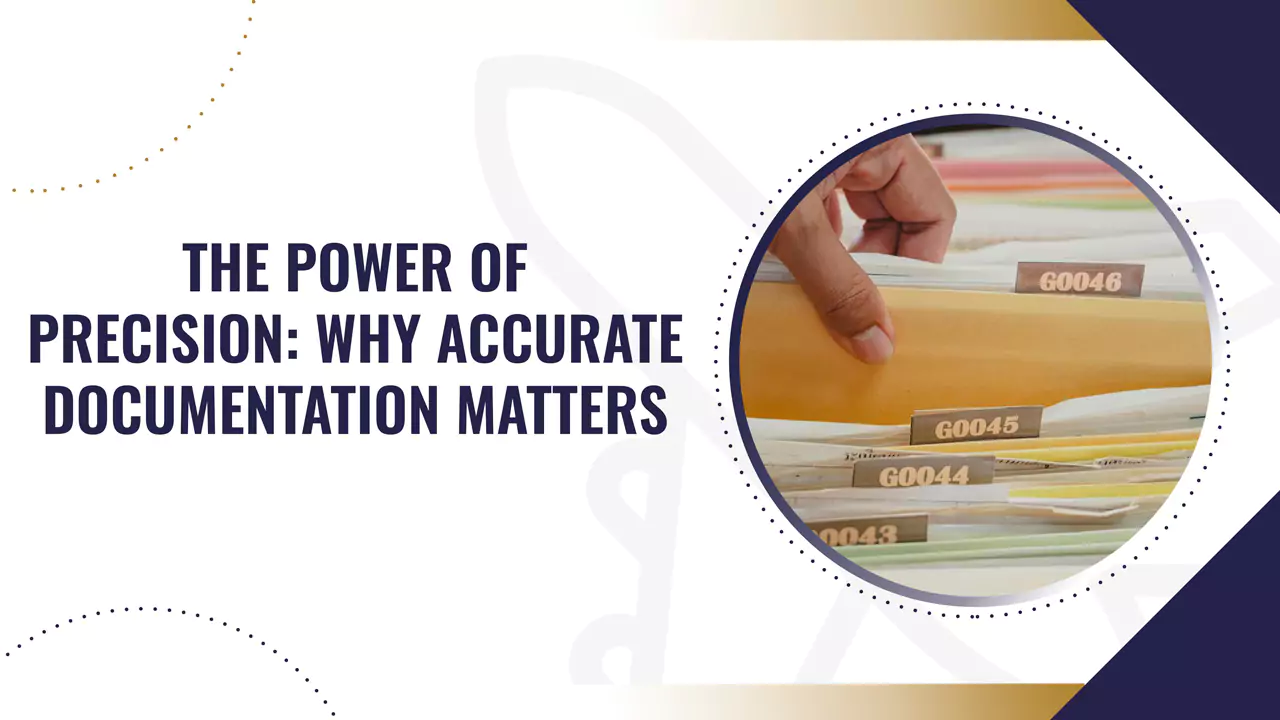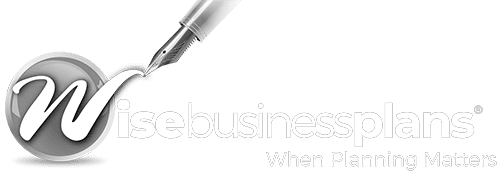The Power of Precision: Why Accurate Documentation Matters
Table of Contents
- The Role of Documentation in Different Fields
- Healthcare
- Business and Finance
- Legal
- The Risks of Inaccuracy
- Miscommunication and Errors
- Legal and Financial Consequences
- Loss of Trust or Credibility
- Benefits of Accurate Documentation
- Improved Decision-making
- Streamlined Workflows
- Enhanced Collaboration and Knowledge Sharing
- Tips for Improving Documentation Accuracy
- Standardization and Templates
- Regular Reviews and Updates
- Training and Use of Technology/Tools
- Conclusion
Accurate documentation means recording information concisely, completely, and correctly in written, digital, or recorded form.
Such precision is essential because it ensures information is reliable, consistent, and accessible. It supports clear communication, enables effective decision-making, and provides a verifiable record of actions and events. In addition, it reduces the risk of errors, enhances accountability, and builds trust within and between organizations. Thus, this article explores the risks of poor record-keeping and how professionals can improve their documentation practices.
The Role of Documentation in Different Fields
Although different industries have unique requirements, they all need clear, consistent records to support their core functions. Below, we discuss the importance of accurate documentation in several sectors.
Healthcare
Medical professionals rely on precise records to understand the medical history, monitor treatment progress, and make informed clinical decisions. Using incomplete or inaccurate information increases the risk of misdiagnosis, delayed treatment, or inappropriate care.
In addition, good documentation facilitates communication between healthcare providers, especially in multi-disciplinary teams, where coordinated efforts are critical for patient outcomes. Beyond clinical care, medical records provide a factual account of patient interactions, treatments administered, and decisions made. In cases of dispute or investigation, these records can demonstrate professional diligence and adherence to protocols.
Continuity of care is another crucial aspect supported by detailed documentation. When patients move between services or providers, records ensure their medical history follows them. This consistency prevents repetitive testing, ensures ongoing treatment is appropriate, and reduces the likelihood of errors.
A crucial part of this documentation process involves medical transcription. Doctors and specialists often dictate their notes for transcription into written records. These transcripts must be precise and timely. Inaccuracies can distort clinical information and lead to serious consequences for patients and providers. For this reason, healthcare organizations rely on competent, experienced professionals with a fast turnaround for transcription projects.
Business and Finance
Proper documentation helps businesses demonstrate compliance and avoid penalties or reputational damage. It helps prepare financial statements that accurately reflect the organization’s position, which is essential for investors and stakeholders.
Documentation is equally vital for auditing. Internal and external audits rely on the availability of precise financial records, contracts, and operational documents.
Effective communication is another benefit of accurate documentation because clear records of meetings, decisions, and transactions help teams stay aligned and informed. Documentation provides a shared reference point, enabling departments to work together efficiently. It also supports continuity when roles change, ensuring that institutional knowledge is preserved and accessible.
Legal
Legal professionals depend on accurate records to draft, interpret, and enforce contracts. These documents must be clear and detailed to ensure that parties understand their rights and obligations. Any ambiguity or omission can lead to disputes, misinterpretation, or unenforceable agreements.
Case records are equally essential. Lawyers, judges, and court officials rely on complete case files to understand legal arguments, track proceedings, and make informed decisions. Missing or inaccurate documentation can hinder the legal process, compromise outcomes, and undermine justice. Consistent record-keeping also supports appeals and reviews.
Due diligence is another area where documentation is critical. Whether conducting background checks, assessing business mergers, or verifying compliance, legal professionals must gather and review various documents.
Accurate legal documentation also plays a key role in risk mitigation. It provides a reliable reference in disputes, helps clarify accountability, and supports the enforcement of legal obligations.
The Risks of Inaccuracy

When documentation lacks precision, the consequences can affect individuals, organizations, and entire systems. This section outlines three areas of risk that arise when records are incorrect, incomplete, or unclear.
Miscommunication and Errors
When records do not reflect the correct information, teams make decisions based on false assumptions. In professional settings, this misalignment can affect workflows, delay outcomes, and increase the risk of costly mistakes. For example, an incorrect medication dosage or a missed allergy detail can result in serious harm.
Errors often follow miscommunication. Once a person acts on incorrect information, others may continue the chain, compounding the original mistake. These breakdowns waste time and require additional effort to correct.
Legal and Financial Consequences
Regulatory bodies expect organizations to maintain reliable, detailed records. Failure to do so can result in investigations, fines, or even suspension of operations. For instance, contracts that contain incorrect details may be considered invalid or unenforceable.
Financially, errors in documentation may lead to overpayments, missed billing opportunities, or incorrect reporting. These mistakes undermine budgeting, reduce profitability, and damage relationships with stakeholders.
Loss of Trust or Credibility
Clients, partners, and the public expect professionalism, and that expectation includes trustworthy documentation. When records contain errors, it erodes confidence in the individual or organization. Further, inconsistent or unreliable information suggests a lack of care, attention, or expertise. Over time, these perceptions can harm reputations and drive clients or customers to seek alternatives.
Internally, poor documentation can also damage morale and collaboration. Team members who rely on inaccurate records may feel frustrated or unsupported. Such mistakes can lead to blame, tension, and reduced productivity. In contrast, accurate documentation builds a culture of reliability and transparency.
Benefits of Accurate Documentation
Accurate documentation is a vital support system across professional settings. Here are the benefits.
Improved Decision-making
When records are accurate, leaders and professionals can review them, knowing the data reflects actual events, conditions, or outcomes.
Poor records, on the other hand, create uncertainty and force people to make assumptions. It slows progress and increases the chance of costly mistakes. On the other hand, accurate documentation removes doubt and allows for faster, more confident action, especially when time is limited.
Streamlined Workflows
Accurate documentation simplifies work processes by reducing confusion and avoiding unnecessary repetition. For example, in project management, clear documentation of responsibilities and progress helps keep teams aligned and prevents duplicated effort.
Well-maintained records also reduce time spent searching for information. Instead of backtracking to verify details or correct errors, employees can focus on productive work. This efficiency saves time and resources, making accurate documentation a cost-effective tool for daily operations.
Enhanced Collaboration and Knowledge Sharing
When documentation is accurate and accessible, team members can trust that they are all working from the same foundation. This consistency supports teamwork, particularly in fast-paced environments where decisions must be made quickly and across departments.
Accurate records also preserve institutional knowledge. When staff transition or new team members come on board, documentation provides a reference point that shortens the learning curve. It allows experienced employees to share insights through clear records instead of relying on memory or repeated explanations. Over time, this strengthens communication, supports training, and builds a more resilient organization.
Tips for Improving Documentation Accuracy

Improving documentation accuracy requires more than attention to detail. It involves creating systems that promote consistency, clarity, and accountability. The following strategies help individuals and organizations strengthen their documentation practices and reduce the risk of errors.
Standardization and Templates
Standardizing documentation practices is one of the most effective ways to ensure consistency across teams and departments. By using clear guidelines and structured templates, professionals can reduce variation in how they record information. Templates ensure they include critical fields and that records follow a logical, easy-to-read format.
Standardization also makes documentation more efficient. When users know exactly where to input or find information, they save time and minimize the risk of skipping crucial details. This approach is helpful in industries that require strict regulatory compliance or involve complex workflows.
Regular Reviews and Updates
Even accurate records can become outdated. Thus, to maintain relevance and reliability, documentation should undergo regular reviews. These reviews help identify missing information, outdated procedures, or inconsistencies that may have developed over time.
Establishing a routine schedule for reviewing and updating documents keeps them aligned with current practices, technologies, and regulations. It also signals a commitment to quality and precision, encouraging teams to treat documentation as a living part of the workflow, not a one-time task.
Training and Use of Technology/Tools
Proper training ensures that everyone involved in documentation understands best practices and knows how to apply them. Training should cover the technical skills required to document effectively, the importance of accuracy, and its role in professional accountability.
Technology also plays a key role in improving accuracy. Digital tools such as document management systems, automated templates, and speech-to-text software can reduce human error and streamline documentation processes. Many industries now rely on electronic systems that include built-in checks to prevent incomplete entries or formatting errors.
Conclusion
Across industries, accurate records support safety, compliance, efficiency, and trust. They are a powerful tool that drives quality and reduces risk.
Creating strong documentation practices demands a culture that values detail, clarity, and consistency. Teams must recognize that documentation is not just administrative work but a critical part of delivering results. Thus, with suitable standards, regular reviews, and proper training, individuals can contribute to making records reliable. Precision isn’t just a detail—it’s a responsibility in every professional setting.













